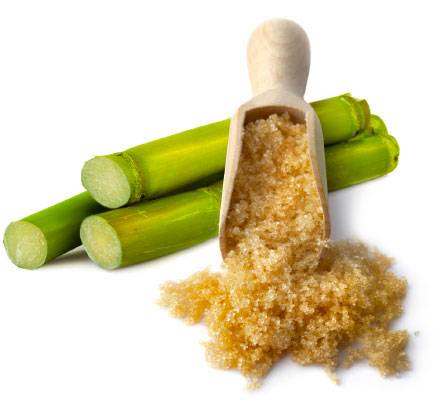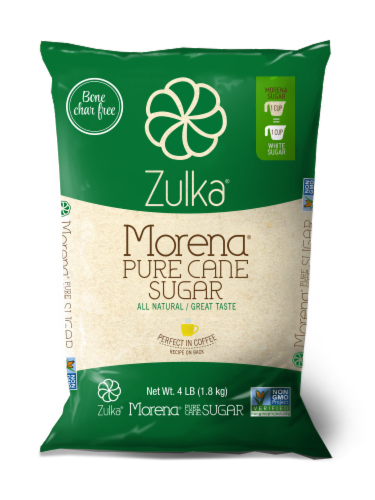Effective Cane Sugar Processing: Making The Most Of Yield and Purity
Effective Cane Sugar Processing: Making The Most Of Yield and Purity
Blog Article
Comprehending the Essential Methods and Technologies Used in Modern Walking Stick Sugar Handling
The evolution of walking stick sugar handling has been substantially shaped by the integration of advanced techniques and technologies that attend to both performance and sustainability. Enzyme-assisted extraction and innovative refining methods have changed yield optimization, while automation assists in functional reliability. Additionally, the emphasis on lasting techniques mirrors an expanding awareness of environmental effect. As we check out these essential advancements, it becomes important to check out just how they not just boost production but also line up with wider market patterns and customer needs, questioning concerning the future of sugar handling and its effects for international markets.
Historic Context of Walking Stick Sugar Processing
The historical context of walking cane sugar processing discloses a rich tapestry of farming advancement and social exchange that has formed its development over centuries. The procedure of fine-tuning and extracting sugar obtained momentum in India, where approaches for crystallization were refined around the 6th century.

Advanced Extraction Strategies
Efficiency in cane sugar removal has actually seen substantial advancements, driven by the demand for greater yields and lower production expenses. This method not just boosts sugar return yet likewise minimizes the power required for handling.
In addition, the fostering of membrane layer purification modern technologies, such as nanofiltration and reverse osmosis, has actually revolutionized the separation of sugar from contaminations. These approaches enable the discerning permeation of sugar particles while retaining bigger impurities, simplifying the removal procedure and lessening waste.
Additionally, the integration of continuous removal systems has actually caused enhanced operational efficiency. Cane Sugar Processing. These systems keep a constant flow of walking cane product, making certain ideal extraction conditions and reducing downtime associated with set handling
Innovative Refining Technologies
Refining strategies in walking stick sugar handling have undergone a transformative change, driven by the demand for greater purity and boosted product top quality. One of the most notable technologies is the adoption of membrane layer filtration modern technologies, such as ultrafiltration and nanofiltration. These processes properly get rid of pollutants and colorants without the need for substantial chemical treatments, consequently preserving the sugar's natural taste and enhancing its appeal.
Another considerable innovation is making use of ion exchange resins, which enable selective elimination of unwanted ions from sugar remedies. This innovation not only boosts the total purity of the last item but likewise adds to reduced waste and environmental influence.
Additionally, advancements in adsorption techniques, using turned on carbon and various other sophisticated materials, have verified effective in decolorizing sugar services while preserving optimum top quality. The integration of these ingenious refining innovations makes sure that suppliers can produce polished sugar with premium clarity and taste, meeting the progressing choices of customers.
Automation and Control Solution
Current innovations in refining technologies have paved the way for significant improvements in automation and control systems within cane sugar processing facilities. These systems use advanced software program and equipment to improve operational efficiency, decrease human error, and guarantee consistent item top quality.
Modern automation incorporates numerous elements, including sensors, actuators, and programmable logic controllers (PLCs), enabling real-time monitoring and control of critical procedures. As an example, temperature level, pressure, and flow rates can be precisely managed throughout extraction, information, and crystallization phases, enhancing performance and minimizing waste.
Moreover, progressed data analytics and artificial intelligence formulas play a critical duty in anticipating maintenance, permitting operators to anticipate tools failures prior to they happen. This proactive strategy not only lowers wikipedia reference downtime however also expands the life-span of machinery.
Additionally, automation assists in the implementation of Market 4.0 principles, equipping sugar mills to achieve better connectivity and information exchange across procedures. Therefore, decision-making comes to be more educated and agile, eventually boosting the general competition of cane sugar manufacturing. With these advancements, the market is well-positioned to fulfill growing international demands while preserving functional quality.
Sustainability Practices in Sugar Production
Sustainability official statement methods in sugar manufacturing have ended up being significantly vital as the sector seeks to balance financial stability with ecological duty. As consumer awareness expands pertaining to the environmental effects of farming practices, sugar producers are adopting innovative techniques to decrease their eco-friendly footprint.
One considerable method is the execution of accuracy agriculture techniques, which utilize data analytics to enhance source use, such as water and fertilizers. This minimizes waste and decreases the influence on local environments. In addition, several manufacturers are transitioning to renewable energy sources, such as biomass from sugarcane byproducts, to power their operations, thereby decreasing reliance on nonrenewable fuel sources.
Water management practices are likewise vital; rain harvesting and effective irrigation systems help mitigate water scarcity concerns. Cane Sugar Processing. Furthermore, integrated insect monitoring approaches lower chemical use, promoting biodiversity and soil health
Corporate social duty initiatives are emerging, with firms buying regional communities and making sure fair labor methods. By accepting these sustainability techniques, the sugar market not only boosts its credibility however also adds to a much more sustainable farming landscape, leading the means for future generations.

Final Thought
In recap, modern-day walking cane sugar handling incorporates a series of innovative strategies and modern technologies that significantly enhance efficiency, sustainability, and yield. The adoption of ingenious extraction and refining methods, along with automation and control systems, facilitates improved functional efficiency and product high quality. Additionally, the emphasis on lasting methods underscores a commitment to decreasing ecological effect and promoting ethical manufacturing. Jointly, these developments position the cane sugar sector to satisfy modern demands while dealing with crucial global obstacles.
The advancement of walking stick sugar handling has been dramatically shaped by the assimilation of advanced methods and technologies that attend to both efficiency and sustainability.The historic context of cane sugar processing discloses a rich tapestry of agricultural technology and cultural exchange that has formed its development over centuries. Advancements in milling and refining arised, laying the groundwork for contemporary walking cane sugar processing.Refining methods in walking cane sugar processing have undertaken a transformative shift, driven by the demand for higher pureness and improved product high quality.In recap, modern-day cane sugar processing integrates an array of advanced techniques and modern technologies that significantly enhance effectiveness, our website return, and sustainability.
Report this page